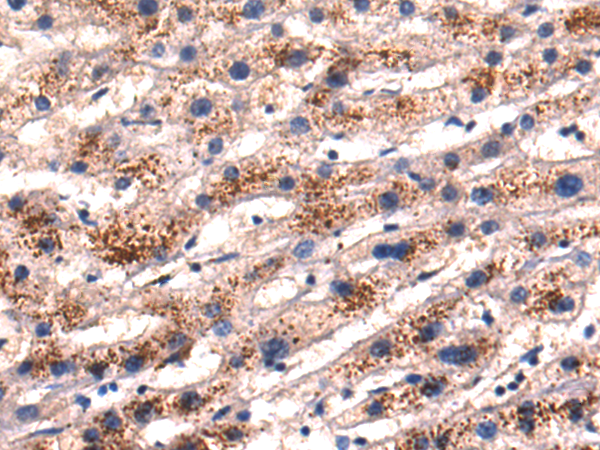

| WB | 咨询技术 | Human,Mouse,Rat |
| IF | 咨询技术 | Human,Mouse,Rat |
| IHC | 1/50-1/200 | Human,Mouse,Rat |
| ICC | 技术咨询 | Human,Mouse,Rat |
| FCM | 咨询技术 | Human,Mouse,Rat |
| Elisa | 1/5000-1/10000 | Human,Mouse,Rat |
| Aliases | CX36; GJA9 |
| WB Predicted band size | 36 kDa |
| Host/Isotype | Rabbit IgG |
| Antibody Type | Primary antibody |
| Storage | Store at 4°C short term. Aliquot and store at -20°C long term. Avoid freeze/thaw cycles. |
| Species Reactivity | Human, Mouse, Rat |
| Immunogen | Synthetic peptide of human GJD2 |
| Formulation | Purified antibody in PBS with 0.05% sodium azide and 50% glycerol. |
+ +
以下是关于GJD2抗体的3篇参考文献及其简要摘要:
---
1. **文献名称**: "Coupling between A-type horizontal cells is mediated by connexin 50 gap junctions in the mouse retina"
**作者**: O'Brien JJ, et al.
**摘要**: 本研究利用GJD2(Connexin 36)抗体探究了小鼠视网膜中水平细胞间的电突触连接。通过免疫组化及电生理实验,证实GJD2蛋白在视网膜神经环路中形成功能性间隙连接,调控视觉信号传递。
---
2. **文献名称**: "GJD2-associated genetic variants and their role in connexin 36 gap junction function in myopia development"
**作者**: Kihara AH, et al.
**摘要**: 研究分析了GJD2基因突变与近视发展的关联,并通过特异性抗体检测GJD2蛋白在人类眼组织中的表达水平。结果提示GJD2介导的间隙连接异常可能影响视网膜发育,导致屈光不正。
---
3. **文献名称**: "Antibody-based profiling of connexin 36 expression patterns in the mammalian central nervous system"
**作者**: Söhl G, et al.
**摘要**: 本文系统评估了多种连接蛋白抗体(包括GJD2/Connexin 36抗体)在中枢神经系统中的特异性。通过免疫印迹和免疫荧光验证,确认GJD2抗体在检测神经元间电突触中的高特异性,为神经环路研究提供工具支持。
---
**备注**:GJD2基因编码的蛋白为Connexin 36(Cx36),相关研究多聚焦于其在电突触和视网膜中的作用。上述文献均涉及抗体的实验应用,涵盖神经科学、眼科疾病等领域。如需更近期研究,建议通过PubMed/Google Scholar检索关键词“GJD2 antibody”或“Connexin 36 antibody”。
**Background of GJD2 Antibody**
GJD2 (gap junction delta-2), also known as connexin 36 (Cx36) in humans, is a member of the connexin family of proteins that form gap junctions—specialized intercellular channels enabling direct electrical and metabolic communication between cells. Predominantly expressed in neurons, GJD2 is crucial for synchronizing neural activity, particularly in the brain and retina, where it mediates electrical synapses. These synapses are essential for processes like visual signaling, circadian rhythm regulation, and network oscillations.
Antibodies targeting GJD2 are vital tools in neuroscience research, enabling the localization, quantification, and functional analysis of this protein. They are widely used in techniques such as immunohistochemistry, Western blotting, and immunofluorescence to study gap junction distribution and dynamics in neural tissues. Research involving GJD2 antibodies has advanced understanding of neurodevelopmental disorders, epilepsy, and retinal pathologies, as disrupted gap junction communication is implicated in these conditions.
Despite their utility, GJD2 antibodies require rigorous validation due to potential cross-reactivity with other connexins. Their specificity ensures accurate insights into the role of electrical synapses in health and disease, highlighting their importance in both basic and translational neuroscience.
×